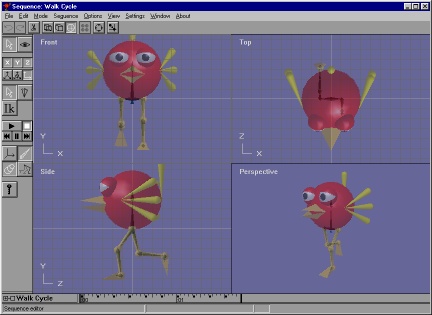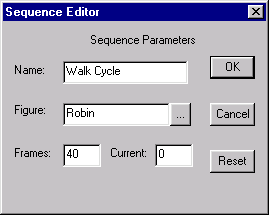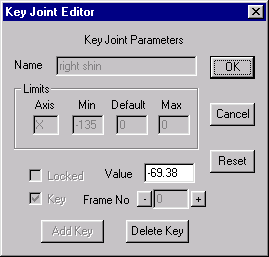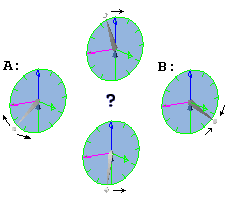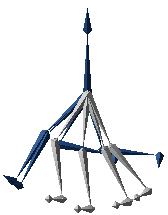To make a key pose you must first
select the joint or joints that you want to bend. Showing the axis and even
hiding the body parts can be helpful. Enter rotate Angle mode  , then enable Animation
, then enable Animation  . Click on the tip
. Click on the tip  of the joint and drag the mouse to rotate it. You have to pick a joint
that can be rotated, and you have to use the correct mouse button for the
axis that you want to rotate.
of the joint and drag the mouse to rotate it. You have to pick a joint
that can be rotated, and you have to use the correct mouse button for the
axis that you want to rotate.
To rotate around the X-axis, which is shown in green,
use the left mouse button. The joint will try to follow the mouse.
To rotate around the Y axis shown in blue
use the right button. Since the Y-axis rolls the joint around the bone's length,
and doesn't change the direction it's pointing, you have to move the mouse
to the left or right to move the joint.
To rotate around the Z-axis shown in violet,
you have two choices. You can use the middle mouse button if you have a 3-button
mouse, or you can use the left button. If the joint can rotate around both
the X and Z-axis, then you have to disable the X-axis first. Double click
on the bone and Lock the X-axis by checking the "Lckd" box in the X row, as
shown below:

|

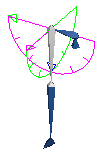
|
